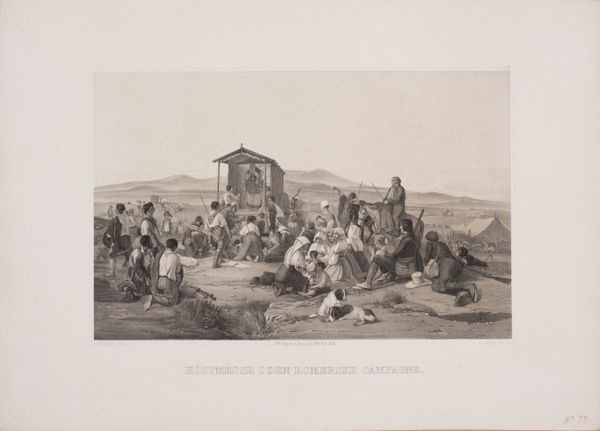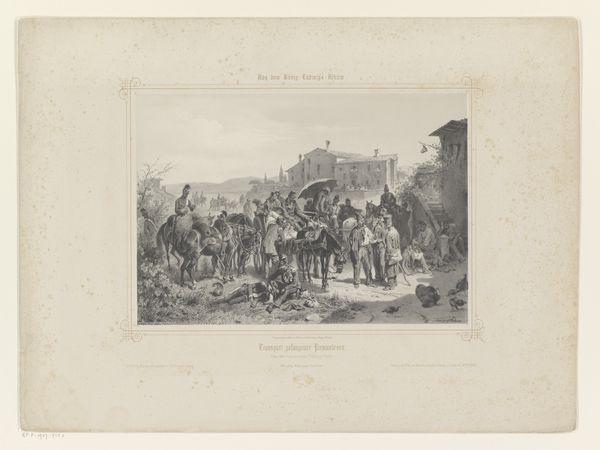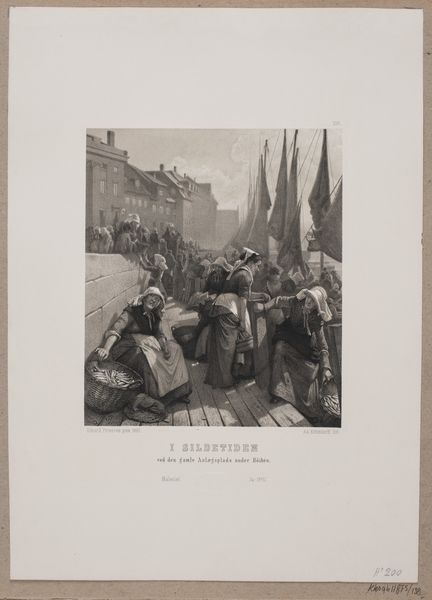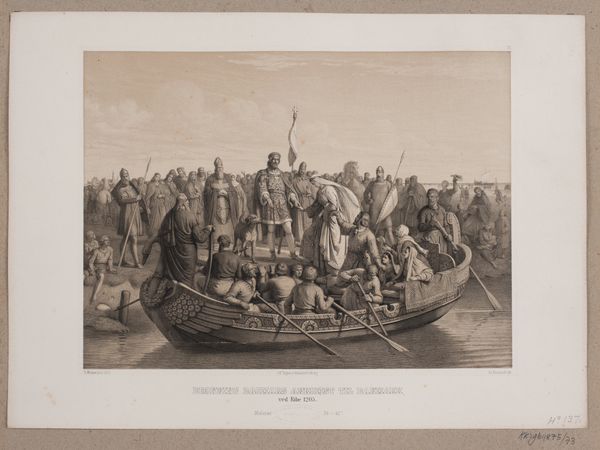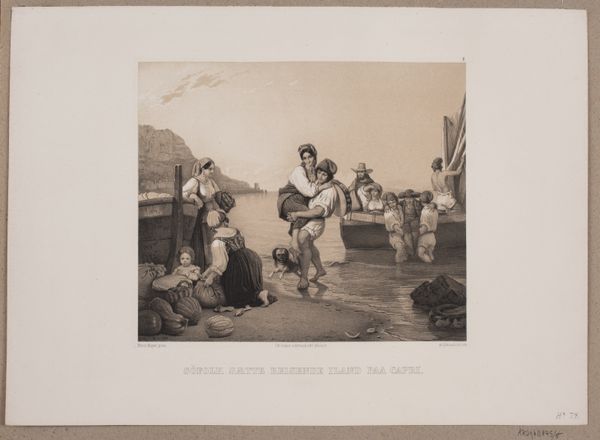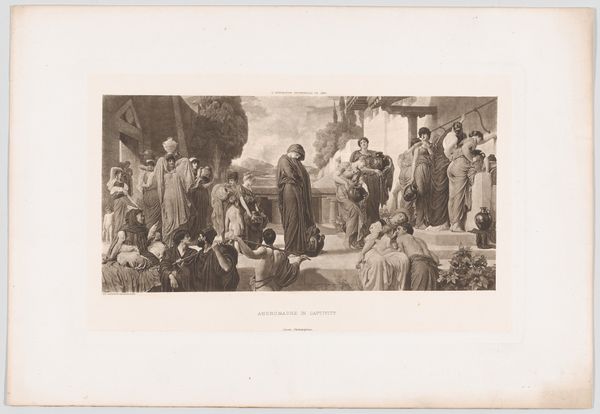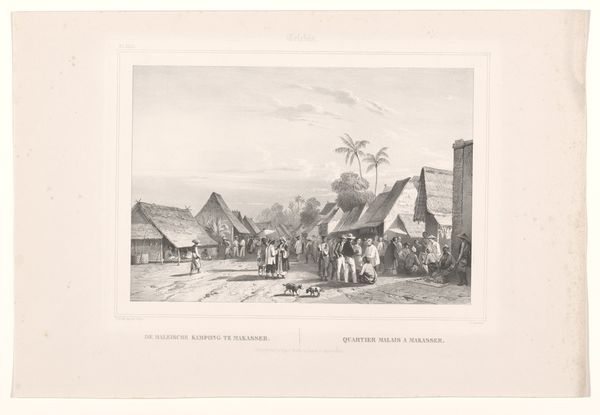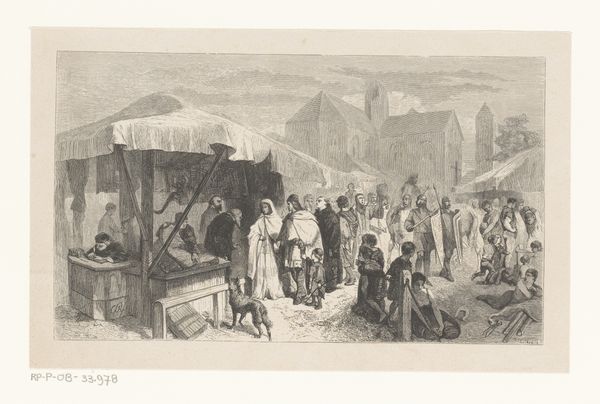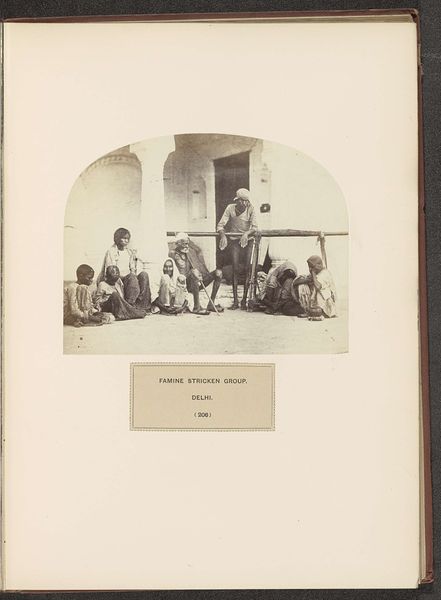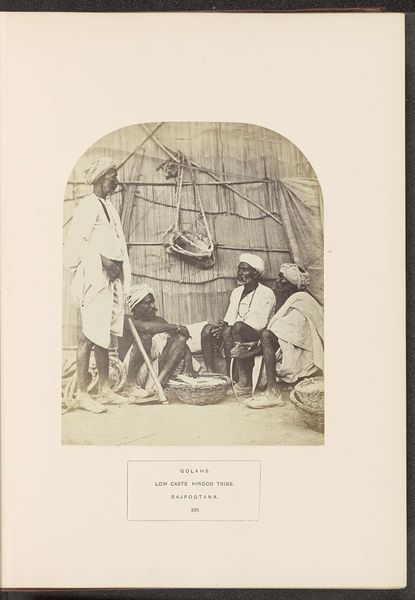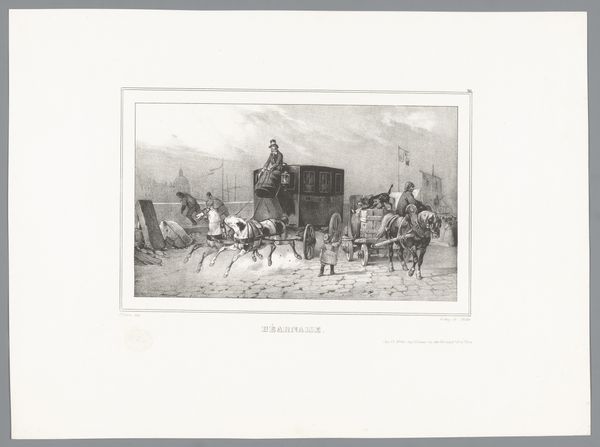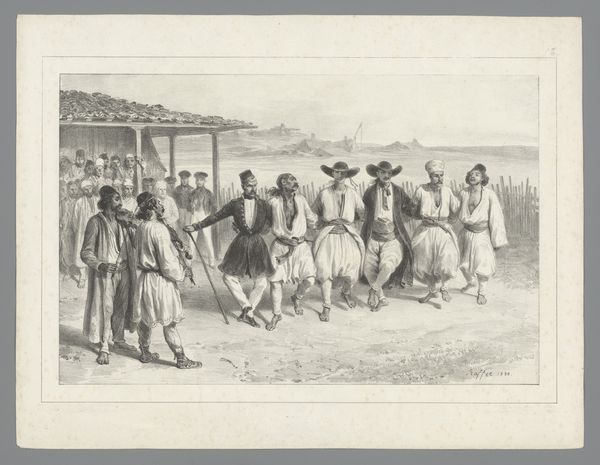
St. Hans fest i Tisvilde i forening med valfart til St. Helenes grav og kilde 1880s
0:00
0:00
Dimensions: 286 mm (height) x 399 mm (width) (billedmaal)
Curator: This lithograph, dating from the 1880s, is by Adolph Kittendorff. The title translates to "St. Hans Fest in Tisvilde, combined with pilgrimage to St. Helene's grave and spring." It's currently housed here at the SMK. Editor: Wow, that's quite a title! It feels very...packed, doesn't it? All those figures sort of spilling out of that cottage. It has a real folk-festival vibe to it. Curator: Indeed. What's striking is the interweaving of Christian pilgrimage with the midsummer solstice celebration—St. Hans, or Midsummer Eve, blends pre-Christian folk traditions with the veneration of Saint Helene. Kittendorff is situating these rural traditions within a specifically Danish cultural narrative. Editor: I like that it’s almost a snapshot, even though it’s a print. You get a sense of a living tradition—that these festivals are still lively, maybe even a bit chaotic. Everyone's milling about, there's music in the air, and you almost expect someone to burst into a folk song. I like that feeling of being right in the thick of it. Curator: Exactly. Consider the context: 19th-century nation-building involved creating unified cultural narratives, and genre scenes like this were a popular method. It reinforced a sense of shared identity by idealizing and romanticizing folk customs, yet perhaps also obscured social complexities and power dynamics of the time. Who gets remembered? Whose customs matter most? These are relevant issues in any image that frames belonging and cultural pride. Editor: Mmh, so, this isn't just a scene, it's an argument, maybe even an act of national pride? Knowing that adds so much to what initially just struck me as a charming, slightly crowded festival picture. Curator: Precisely. Looking closely reveals these layers, encouraging critical engagement with depictions of history and cultural identity, as it shapes and frames notions of Danish identity at the time. Editor: I came expecting a festive scene, and I’m leaving with something far deeper. That's the real magic of diving into a work like this, isn’t it? Curator: Yes, it's a reminder of how much context and culture shape the stories we tell about ourselves, and how those stories always benefit from fresh perspectives.
Comments
No comments
Be the first to comment and join the conversation on the ultimate creative platform.
